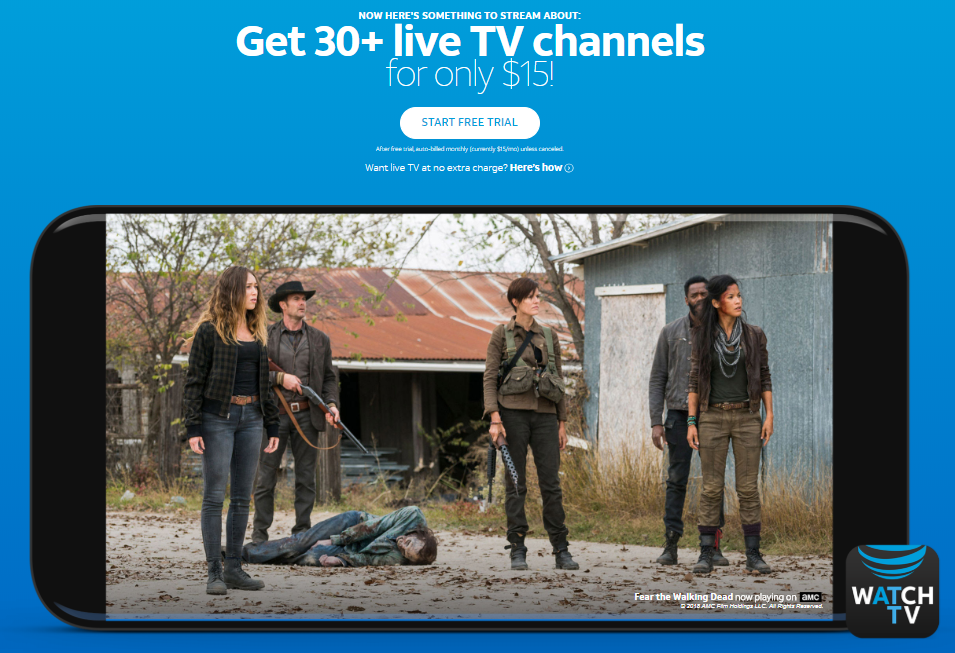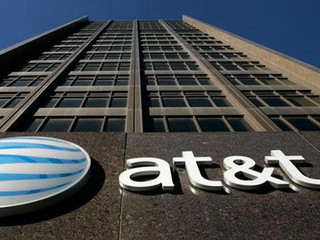

It’s only been two weeks since AT&T completed its much discussed, and somewhat controversial, $85 billion acquisition of Time Warner. Yet the effects of it are already being felt in the company’s products and services.
A little more than a week after it announced a new, lower-cost streaming service in the wake of the merger, AT&T’s new streaming option is already here and ready for purchase.
Called “WatchTV,” it allows users to stream over 30 channels of live TV, as well as 15,000 TV shows and movies on demand, for $15 a month. Some of the channels included in the package are TBS, Cartoon Network, CNN, Discovery, Turner Classic Movies and TNT, all of which are owned by WarnerMedia, the new name that Time Warner had adopted.
In addition, AT&T also allows its customer to add one premium service at no extra charge, such as HBO, Cinemax, SHOWTIME or STARZ, along with music streaming services like Amazon Music Unlimited and Pandora Premium. HBO and Cinemax are also both owned by WarnerMedia.
WatchTV, is also available as a free service for customers of AT&T’s Unlimited Wireless Plans.
AT&T already has an existing streaming service called DirecTV Now, which came out of its acquisition of DirecTV for $48.5 billion in 2015. That service provides many more channels, up to over 120 of them, but it also costs much more than WatchTV: at least $35 per month, and as much as $70 per month, depending on the size of the package.
“We were the first wireless provider to bring entertainment and unlimited data together, and, once again, we’re redefining what that means,” David Christopher, president, AT&T Mobility and Entertainment said in a statement when announcing WatchTV.
“This is no longer about including one channel or service with your wireless plan. This is an incredible lineup of content that delivers more of what you care about – over 30 live TV channels and more than 15,000 TV shows and movies on demand, as well as premium movie channels, music streaming with more to come!”
WatchTV will not only have competition from AT&T’s other live TV streaming service, but also from Dish, which unveiled Sling TV, a Web-TV service that allows subscribers to watch certain cable networks on their computers for less money per month, in 2015.
Sling TV now has 2.3 million subscribers, which is larger than the 1.46 million subscribers DirecTV Now has as of AT&T’s earnings report in April. Comcast, which launched its own Stream TV app in 2017, hasn’t released the numbers on its subscribers.
The rise and importance of streaming
It took less than 10 years for streaming to go from a niche way to access content to the mainstream. It’s now at the point where streaming is actually now more popular than live television.
Two of the most popular streaming services launched in 2006. Amazon Video on Demand, then known as Amazon Unbox, launched on September 7, 2006 (it would be renamed in 2011). Initially only available for users who had TiVo, it allowed users to rent or purchasing thousands of movies and TV shows.
Hulu, meanwhile, was founded in 2006 as a joint venture between between NBC Universal and News Corp. with AOL, Comcast, Facebook, MSN, Myspace, and Yahoo! planned as initial distribution partners. It went live in 2007.
Netflix, which was then a DVD-by-mail company, delivered its billionth DVD in 2007, but also began to move away from its original core business model by introducing its video on demand service in 2007. In the early days, the number of hours of streaming depended on the user’s individual plan, corresponding with the dollars they paid.
Cut to 2015, where a survey from consulting firm Deloitte found that 42 percent of American households were using video streaming services. It found that more than half, 56 percent, of those surveyed stream movies and TV shows, 56 percent and 53 percent respectively, while only 45 percent watch TV shows live.
At this point, thanks to those three services, it’s not even enough to have one streaming service, a company like AT&T has to have several that appeal to different types of audiences.
Vator reached out to AT&T for further comment on its streaming strategy. We will update this story if we learn more.
(Image source: attwatchtv.com)





















